
Can-Do Statement about French Political Leaders and Food Preference
- Subject:
- Arts and Humanities
- Languages
- Material Type:
- Interactive
- Provider:
- Michigan Virtual
- Date Added:
- 02/04/2020

Can-Do Statement about French Political Leaders and Food Preference

Can-Do Statement about Writing Paragraph about History

This chapter is all about history. In future grades students begin to learn about the history of our state, our country, and our world. In the early grades however, students learn about history through a much smaller lens. In first grade it’s about families.

In this unit students study the Civil Rights Movement through the eyes of the youth and children who experienced the struggles, hardships, victories, defeats, and possibilities firsthand. Students will be challenged to analyze the key characteristics shared by children who participated in the Civil Rights Movement, particularly their courage, commitment, bravery, and unending commitment to fighting for the cause. Over the course of the unit students will realize that through community organizing and a strong desire for justice, regular people, especially youth, were able to come together to use a variety of nonviolent tactics to fight for change, even when faced with resistance, oppression, and violence on a daily basis. The stories and experiences in the unit will highlight that the Civil Rights Movement was driven by the heroism of regular people and that anyone can participate in the fight against injustice. It is our hope that this unit, in conjunction with other units from the sequence, will empower students to notice and challenge the injustices, relying on their knowledge of history and the lessons they’ve learned from those who have fought before them.
In this unit students refine their skills as critical consumers of texts by analyzing the point of view from which a text is written and noticing how the point of view influences what and how information is presented to a reader. Students will read multiple accounts of the same topic or event and be challenged to notice the similarities and differences in the points of view they represent and how the author uses evidence and reasons to support a particular point of view. Photographs are an important part of the texts in the unit. Students will be pushed to analyze photographs as a source of information to support an author’s point. Students will also continue to practice determining one or more main ideas of a text and explaining how they are supported by key details, summarizing a text, and explaining the relationship between one or more events or individuals in a historical text. Over the course of the unit students will also be required to access information from multiple sources in order to integrate information and draw conclusions about an event or topic.
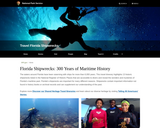
This is a travel itinerary featuring 13 historic shipwrecks in waters near Florida, a convergence point for maritime trade routes. Learn about the historical significance of these 13 shipwrecks. See photos and an essay on Florida maritime history.

Students will learn about the history of typography then take that knowledge and working in groups, research a variety of fonts from their assigned decade. They will then chosen a font that most reflects that decade and recreate it using their choice of material to make a collaborative Decades Heading. Each student in a group will complete one number from the decades headings for example 1950.
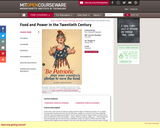
In this class, food serves as both the subject and the object of historical analysis. As a subject, food has been transformed over the last 100 years, largely as a result of ever more elaborate scientific and technological innovations. From a need to preserve surplus foods for leaner times grew an elaborate array of techniques -- drying, freezing, canning, salting, etc -- that changed not only what people ate, but how far they could/had to travel, the space in which they lived, their relations with neighbors and relatives, and most of all, their place in the economic order of things. The role of capitalism in supporting and extending food preservation and development was fundamental. As an object, food offers us a way into cultural, political, economic, and techno-scientific history. Long ignored by historians of science and technology, food offers a rich source for exploring, e.g., the creation and maintenance of mass-production techniques, industrial farming initiatives, the politics of consumption, vertical integration of business firms, globalization, changing race and gender identities, labor movements, and so forth. How is food different in these contexts, from other sorts of industrial goods? What does the trip from farm to table tell us about American culture and history?

Forever Ago is a history podcast show for the whole family. Each episode explores the origin of one thing while teaching students to think critically about the past.
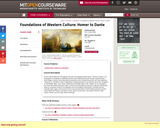
" As we read broadly from throughout the vast chronological period that is "Homer to Dante," we will pepper our readings of individual ancient and medieval texts with broader questions like: what images, themes, and philosophical questions recur through the period; are there distinctly "classical" or "medieval" ways of depicting or addressing them; and what do terms like "Antiquity" or "the Middle Ages" even mean? (What are the Middle Ages in the "middle" of, for example?) Our texts will include adventure tales of travel and self-discovery (Homer's Odyssey and Dante's Inferno); courtroom dramas of vengeance and reconciliation (Aeschylus's Oresteia and the Icelandic NjĚÁls saga); short poems of love and transformation (Ovid's Metamorphoses and the Lais of Marie de France); and epics of war, nation-construction, and empire (Homer's Iliad, Virgil's Aeneid, and the Anglo-Saxon Beowulf)."
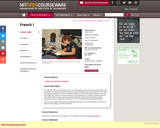
Introduction to French language and culture. Emphasis on the acquisition of vocabulary and grammatical concepts through active communication. Immediate exposure to authentic French via video sources and printed materials for developing cultural awareness as well as linguistic proficiency. Coordinated language lab program. For graduate credit see 21F.351.
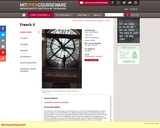
Further development of linguistic proficiency through active communication. Expansion of vocabulary and completion of the basics of French grammar. Continued exposure to culturally authentic audio and video materials in the classroom and the language lab. Study of short texts. Increased practice in writing. For graduate credit see 21F.352.
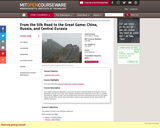
Examines interactions across the Eurasian continent between Russians, Chinese, Mongolian nomads, and Turkic oasis dwellers during the last millennium and a half. As empires rose and fell, religions, trade, and war flowed back and forth continuously across this vast space. Britain and Russia competed for power over Eurasia in the "Great Game" of geopolitics in the nineteenth century, just as China, Russia, and others did in the twentieth century. Today, the fall of the Soviet Union and China's reforms have opened new opportunities for cultural interaction. Topics include: the religious traditions of Central Asian Islam, Buddhism, Christianity, and Confucianism; caravans and travelers like Marco Polo and Rabban Sauma, the first Chinese to travel to the West; and nomadic conquest and imperialist competition, past and present. Source materials include primary documents, travelogues, films, music, and museum visits.

This subject explores the legal history of the United States as a gendered system. It examines how women have shaped the meanings of American citizenship through pursuit of political rights such as suffrage, jury duty, and military service, how those political struggles have varied for across race, religion, and class, as well as how the legal system has shaped gender relations for both women and men through regulation of such issues as marriage, divorce, work, reproduction, and the family. The course readings will draw from primary and secondary materials in American history, as well as some court cases. However, the focus of the class is on the broader relationship between law and society, and no technical legal knowledge is required or assumed.
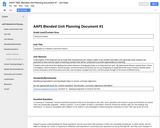
Students will understand that applying the various Elements of Geography helps us to understand our past. By exploring the World in Spatial Terms, Places and Regions, Physical Systems, Human Systems, and Environment and Society, we can use Geography to comprehend the issues of history, identify where events took place, what those places were like, how the places changed over time, and how people thought of the world at different times.
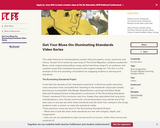
This video features an interdisciplinary project that joins poetry, music, visual arts and history. As part of an historical case study of The Great Migration, students studied the Blues, wrote original poems/blues songs, performed those songs for an audience, and created a book that combined the poems with original collage art. This film is a fine example of the arts providing a foundation for engaging students in learning and standards.
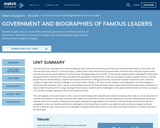
This unit serves as a foundation for understanding the way in which the American government was formed and the way it is structured. The unit has three main sections. In the first section, students learn about the functions of government, the three main branches of government, and how the branches work together to meet the ever-changing needs of our country. In this section students will be challenged to think about how government is useful to its citizens and about the key powers of each branch. In the second section, students explore elections and how people become elected officials. Students also explore the women's suffrage movement, why women couldn't vote before 1920, and what changes brought about women's suffrage in the United States. Finally, in the third section, students read biographies of a few courageous individuals who overcame racism, sexism, and hardships to prove that they deserved a spot in government and that they would do whatever it takes to fight for and push for change. During this final section, students will be challenged to think about how the actions of others can inspire us to drive for change, especially in the current political climate.
This unit expands on the work done in units 1 and 2 to build reading skills. Students will continue to develop their skills as critical consumers of a text by annotating for main idea and details that support the main idea of a text, summarizing sections of a text, explaining the connection between ideas and concepts, interpreting information presented through different text features, and describing the structure of different paragraphs. In this unit students will also be challenged to think about how an author uses evidence and reasoning to support particular points or ideas in a text. They will also be challenged to integrate information from one text with information they learn in another text about the same topic.
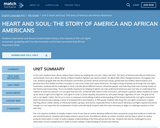
In this unit, students learn about United States history by reading the core text, Heart and Soul: The Story of America and African-Americans, and excerpts from Let It Shine: Stories of Black Freedom Fighters and Hand in Hand: Ten Black Men Who Changed America. Throughout the unit, students grapple with the discrimination and broken promises African Americans faced, paired with the endless determination and perseverance that fueled countless triumphs to overcome unfair and unjust treatment. Through a study of slavery up through the civil rights movement, students will be challenged to think critically about different events, influential people, and how they have had a lasting impact on the America we know today. This is incredibly important for helping students not only understand America’s past, but also to understand the realities of America’s present. It is our goal that this unit, combined with others in the curriculum, will inspire a passion within students to stand up for what is right and to fight for civil rights in order to attain equality and justice for all human beings, regardless of race. The goal of this unit is not depth; rather, the focus is more on exposure and building student understanding of the history behind the civil rights movement while simultaneously building a sense of empowerment and empathy. In fifth grade, students will study the civil rights movement in depth, learning about a wider variety of influential leaders, groups, and events, especially those in which youth advocacy and fight inspired and drove change. It is our hope that the combination of both units will equip students with the tools necessary to begin to challenge injustice in their own lives.
The unit requires students to deeply analyze a text to see how an author develops different ideas and points using vivid evidence in both the text and illustrations. Students will analyze author’s word choice, the different details an author includes, and the way in which an author presents information in order to build a deeper understanding of the time period and the text. Students will also be challenged to carry information across multiple texts in order to build a deeper understanding of content and themes.
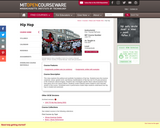
" This class explores the political and aesthetic foundations of hip hop. Students trace the musical, corporeal, visual, spoken word, and literary manifestations of hip hop over its 30 year presence in the American cultural imagery. Students also investigate specific black cultural practices that have given rise to its various idioms. Students create material culture related to each thematic section of the course. Scheduled work in performance studio helps students understand how hip hop is created and assessed."
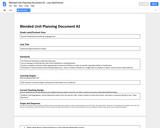
Students will study a variety of historical figures and specifically focus on one person to understand more about his/her life.
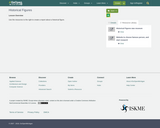
Use the resources to the right to create a report about a historical figure.